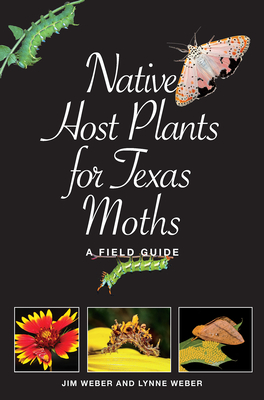You are here
Back to topNative Host Plants for Texas Moths: A Field Guide (Myrna and David K. Langford Books on Working Lands) (Paperback)
Description
While day-flying butterflies have long captured the attention of nature enthusiasts, moth species outnumber butterfly species by about fifteen to one, with many being overlooked due to their mostly nocturnal habits. Although they are far less noticeable to us, moths are essential to many other species, including the plants they pollinate and the animals they nourish. In their caterpillar or larval form they provide a primary source of sustenance for birds, and as adults they feed everything from tiny bats to large mammals.
Native plants are of utmost importance for moths, as they evolved alongside them, and they are the principal factor for dictating moth species range and distribution. Like butterflies, moths require native plant species they recognize in order to lay their eggs. This user-friendly, heavily illustrated follow-up to Lynne and Jim Weber’s highly successful Native Host Plants for Texas Butterflies describes over 100 native, larval host plants for moths in Texas. More than 150 moth species are illustrated in the book, both larval and adult phases, with one to two species for each of the larval host plants.
Today there are about 4,700 species of moths recognized in Texas, with new species and their host plant associations still being discovered. Native Host Plants for Texas Moths will prove to be an informative introduction to this less widely known world of moths and their host plants, providing a better understanding of how to discover, support, and protect these important insects.
About the Author
JIM WEBER and LYNNE WEBER are retired from the tech industry in Austin, where Lynne was a senior manager and Jim was a senior engineer. Both are certified Texas Master Naturalists and are the coauthors of Native Host Plants for Texas Butterflies: A Field Guide, Nature Watch Austin, and Nature Watch Big Bend. They live in Austin.
Praise For…
“Another gem by the Webers, who through their lovely books have added so much to our enjoyment of nature in Texas. Moths are relatively under-appreciated and this book helps redress that imbalance. The Webers are keen to show the amazing ecology and connection between plants and moths. So many surprises: Who knew our the beloved Indian Blankets along our roadsides harbor a moth whose color matches the flower. It is a wonderful complement to their companion book, Native Host Plants for Texas Butterflies.”—Dan Hardy, President, Austin Butterfly Forum
— Dan Hardy
Lynne and Jim take what some might assume to be an obscure topic and present it in an engaging, clear and welcoming format for wonks and non-wonks alike. They reveal to us secret routine livelihoods of moths and invite us to intimately observe tightly interwoven relationships between these insects and the plants that support them. Beautiful and fascinating discoveries appear on every page."—Andrea DeLong-Amaya, director of horticulture, Lady Bird Johnson Wildflower Center
— Andrea DeLong-Amaya
“Banish whatever notions you have about moths. This captivating counterpart to Native Host Plants for Texas Butterflies will bedazzle you with the colors, textures, and patterns among these overlooked species, and impress you with their reliance on specific native host plants for survival. Readers of all interests and skill levels will benefit from the abundant and exceptional photography, common-sense descriptions, and coherent distribution maps that make this a perfect field guide.”—Matt Warnock Turner, author of Remarkable Plants of Texas: Uncommon Accounts of our Common Natives
— Matt Warnock Turner
